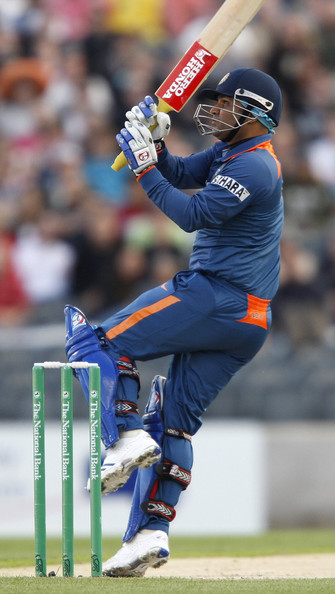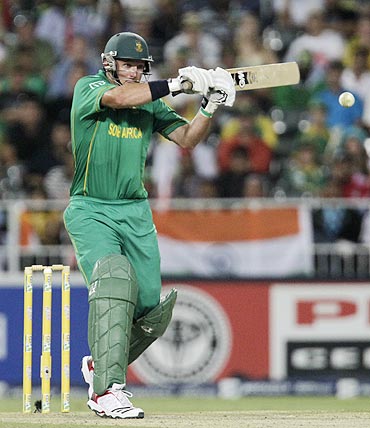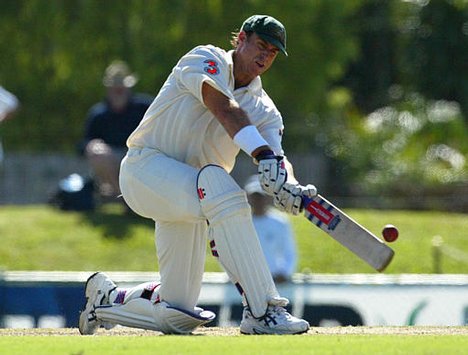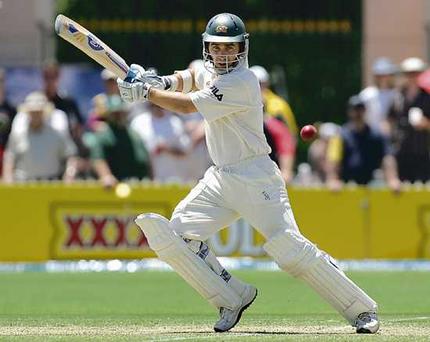Test cricket is said to be the most just format of the game, as there is always a fair contest between bat and ball. And the contest is more thrilling at the beginning of an innings, when the attention span of viewers these days is at its peak. The fast bowler runs in to bowl at the opening batsmen with the new ball generally, and with his tails up. It is a colossal challenge for the batsmen to score runs in the first 15-20 overs in particular since bowlers have the ability to bowl 10 overs on the trot.
Hence, here is an acknowledgment of those opening batsmen who have been successful in overcoming the challenges for their sides and have won them Tests on a regular basis.
1) Sunil Gavaskar (India)
Sunil Gavaskar was easily the original ‘Little Master’ of Indian cricket.

He hails from Mumbai, the city which has dominated domestic cricket over the years and especially in his time. He represented St. Xavier’s in school cricket and was already considered a batting prodigy in his teens.
Following consistent performances in first-class cricket, he was noticed by the Indian selectors and so in March 1971, he was called up to the Indian squad to tour the West Indies. And he made his debut at a ground which he went on to have a love affair with throughout his career, the Port of Spain in Trinidad. There was no debut century from Gavaskar but he impressed one and all with two half centuries against a pacy West Indies bowling attack, led by the legendary Sir Gary Sobers.
In the series though, he ended with 774 runs in 4 Tests, being the architect of India’s first ever Test series win in the Caribbean and a rare away series victory. The next three Tests were drawn but India were in grave danger of losing in Barbados and Trinidad in the last two Tests, and it was the debutant who kept India’s pride intact. Gavaskar has the world record still of being the highest run-getter in a debut series, and from there on there was no looking back.
He kept accumulating runs in almost all conditions due to his classical style of batting which involved a solid technique and immense concentration. He had a great eye and that was the key to his success in playing fast bowling extremely well, in particular. Sunil Gavaskar had an average of 65.45 against the Windies throughout his Test career, and that is magnificent considering that they were the world champions.
His wicket was the hardest to get for any bowler and therefore it is no surprise that he is the first batsman to have scored 10,000 runs in Test cricket and broken Bradman’s record of 29 Test centuries. His last game was against Pakistan on a minefield of a pitch in Bangalore and still showed that he had loads of cricket left in him, as he was dismissed for 96 in the second innings.
Now, he is a commentator and a part of the IPL committee in the BCCI. His service to Indian cricket has been outstanding and he laid the foundations for India’s growth as a Test team.
2) Virender Sehwag (India)
Virender Sehwag is one of the few players in the contemporary era to be considered as an all-time great opening batsman.

It was he after all who changed the style of batting in Tests much before the arrival of T-20 cricket. He proved that attacking batting in Test cricket is nothing worth to condemn and actually is effective in getting runs for the team, so that runs can be scored at a quick rate and the bowlers will have enough time to bowl out the opposition.
He made his Test debut in Bloemfontein against South Africa in 2001, when he batted at No.6. He scored a memorable hundred with fittingly his idol, Sachin Tendulkar being at the other end. This was a sign of greater things to come from his willow in the longest format of the game, with Sourav Ganguly being captain of the Indian side in those days.
Ganguly and coach John Wright thought that Sehwag could be India’s solution to their perennial problem of finding a top-class opening batsman, after they saw his success in ODIs. He first opened in England, which has conditions where the ball swings viciously and it was said that Sehwag cannot handle the pressure on him due to his natural game. But he proved his critics wrong with an 84 in the first innings of the first Test at Lord’s, and more strikingly a hundred in the following Test at Nottingham.
Since then, he has smashed hundreds in Australia, Pakistan, Sri Lanka and West Indies and out of those, the 309 in Multan in 2004 won India a Test match in Pakistan which was critical in them going to win the series. In Sri Lanka, his double hundred at Galle in 2008 when all the others struggled against spin, was not only rated by many as the best Test innings of the year, but also helped India lose 1-2 in a 3 match series rather than 0-3.
At home, India has still been able to possess a stronghold and this is because of Sehwag’s aggression which works on flat wickets the most. His 319 against South Africa in Chennai in March 2008 made him only the second batsman to score two triple centuries, after greats such as Don Bradman and Brian Lara. He could have made a third one as well, but missed out by 7 runs against Sri Lanka in 2009 in Mumbai.
He makes any bowler shiver and is a prized scalp, because the rest of the Indian batting is exposed early in an innings and this has been seen in Australia recently. At the moment, he has 8098 runs to his name in 95 Tests with an average of 50.93, and already 22 hundreds in his name with 14 150+ scores. How can he not be considered an all-time great?
3) Graeme Smith (South Africa)
Graeme Smith has been an asset for South Africa in Tests throughout his career, and it is primarily due to his painstaking method of batting that has catapulted South Africa in the top 3 of the rankings over the last four years.

Graeme Smith is powerfully built and that makes him an excellent timer of the ball, since he cannot run the ones and twos with panache. He is one of the top players in world cricket when it comes to the leg side and can drive balls outside off-stump decently enough despite not having the best of footwork.
He made his debut against Australia in his home ground, the Newlands at Cape Town in March 2002. Smith scored a fifty on debut in the second innings, but he made an impact in the minds of South African fans for the first time after hitting 151 not out against Pakistan at Cape Town in the 2003 New Year’s Test. The year was about to get better for Smith as he was shockingly named captain of the Test and ODI sides respectively, after the World Cup.
His captaincy debut was in Bangladesh but the real challenge was to come, and it was against England in England. Smith had an uphill task in hand, but started off in grand fashion at Birmingham in the first Test of the series, hitting a monumental 277 in the first innings and followed it with an 85 in the second to ensure a drawn match. But at the home of cricket, at Lords Smith hit another double ton and that is a tremendous achievement in English conditions as few batsmen in the modern game had done this before. His 259 was instrumental in South Africa winning the Test match by an innings and 92 runs and a crucial 1-0 lead with 3 matches to play.
He did not have a great series after that with the bat, but fans were forgiving enough to him for leading the side to a 2-2 result in 5 matches. After that, Smith became the team’s prolific run machine, scoring runs in New Zealand, West Indies (where he hit 3 hundreds), Pakistan, Bangladesh, Australia and of course England and out of these, his contributions were extremely vital in South Africa winning series in all countries except New Zealand.
He has struggled though with spin, as seen with his average record in India and Sri Lanka but all batsmen have a certain amount of weakness when it comes to their batting skills. He has to be acknowledged for not letting captaincy affect his batting one bit, as he has 23 Test hundreds to his name with amazingly only 10 Test hundreds at home. That probably might also be the reason why South Africa had not won a home series since 2008, before winning only recently against Sri Lanka.
A true match winner and fighter that he is, South Africa needs his services as a batsman and it will be a sad day for cricket to see him retire. He should a future Hall of Famer by then.
4) Matthew Hayden (Australia)
Matthew Hayden will go down as one of the master opening batsmen for Australia at least of all time, in both ODIs and Test matches.

Plus, what is remarkable about him is that he has been dropped twice from the Test team, once in 1994 right after his Test debut and in 1997 after one season. He still made a comeback in early 2000, and this time he ensured that he would not be kicked out of the side again until he retires. And that is exactly what happened.
His first Test hundred was against West Indies in Adelaide in 1997, but it was not enough to impress the selectors who were already burdened to pick a XI out of players who were much more classy than him at that time. But the Queenslander finally grabbed headlines and eyeballs alike on the tour of India in 2001.
He hit a solid 119 in the first Test in Mumbai, which bailed Australia out of trouble in the first innings being 99/5 at one stage. They went on to thrash India by 10 wickets and go 1-0 up in the 3 match series. There was no hundred in the second Test at Kolkata, having scored 97 in the first innings. A fighting 67 from him in the second innings could not avoid a humiliating defeat for Australia, who had asked India to follow on. But he scored a magnum opus 203 on a dry pitch in Chennai, favouring the spinners and handling the in-form Harbhajan Singh extremely well. Australia went on lose the series, with Matthew Hayden being the highest run-getter and playing almost single-handedly while the other batsmen failed miserably.
He scored 16 Test hundreds in the years 2001, 2002 and 2003 on an aggregate, establishing himself at the top of the order for Australia alongside Justin Langer. Hayden’s massive innings saw Australia beat South Africa thrice at home in the 2001-02 summer and in South Africa once. His duels with Shoaib Akhtar, which began in Sharjah in 2002, have been fascinating to watch with Hayden eventually going on to confess his hatred for him in public. While in the Ashes, his rivalry against England went a step further after charging down the track to their fast bowlers in the 197 and 103 he hit against them in the first Test at Brisbane in November 2002.
In 2003, he broke Brian Lara’s world record score by hitting 380 runs in an innings against Zimbabwe at Perth but unfortunately Lara regained the record by scoring 400 a few months later.
Hayden had an average 2004 and 2005 to an extent because of a poor Ashes series in England, but bounced back with five centuries in the home summer as he and Ricky Ponting were in such good form that Australia were unbeatable in that period of time.
Since 2006 though, Hayden could not get back in his prime form and scored scratchy centuries against India in the home series of 2007-08, although there were three of them, making him feature in the top 3 run-getters of the series. His time was up as he thought so, playing his final Test against South Africa at the SCG in 2009.
Hayden has scored 30 Test centuries, one above Bradman and this is no mean achievement. He has scored hundreds in India, England, Sri Lanka, South Africa and West Indies making him one of the finest opening batsmen of all-time and not to mention, his dominating centuries at home being a joy to watch.
5) Justin Langer (Australia)
Justin Langer formed one of the greatest opening partnerships with Hayden of all-time as Australia flourished, with these two at the crease in Test matches.

He was the perfect match for Hayden, as he would use aggression, but being calculative in his shots at the same time while Hayden would look to bludgeon the bowling around almost all the time. He changed his game from being a complete grinder, to a grinder-cum-hitter as he realized that his natural game would continue to throw him out of the Australian side over and over again.
Like Hayden, Langer was fighting for a place in the side due to a packed Australian batting line-up in the 90s. But the turning point of his career was his 127 in the Hobart Test may not be remembered by many due to Gilchrist’s 149 overshadowing it, but that was vital in helping Australia win the Test from behind. This made the captain Steve Waugh rate him as ‘the best batsman in the world’.
What was to follow was a mountain of runs from his bat. Although he did suffer from a lean patch in 2001 in India, Langer was able to hit back at his critics in style in the home summer of the same year which was against New Zealand and South Africa, scoring four centuries in total. Even if he was not able to convert his meager scores into tons, he was doing a fine job in partnering an in-form Matthew Hayden as fifty and hundred run partnerships between the duo were a common feature those days.
His highest score of 250 came against England in the Ashes series in 2002 at home in the Boxing Day Test. That innings put England under such pressure that they had to bat out of their skins in the whole game and Australia won by 5 wickets in the end, going 4-0 up in the series in four Tests.
It was 2004, though which was Langer’s marquee year. He hit 1481 runs with five centuries, four of them being at home and one in Sri Lanka, which was not just a match-winning but a series-winning effort as well. He continued his form of 2004 in the first half of 2005 as he top-scored for Australia in the failed Ashes 2005 campaign, scoring 394 runs at an average of 43.77, showing his mental toughness to play decently despite a dejected team playing the series.
But it seemed he had lost his appetite to score big runs and that was the main reason he quit after the 2007 Ashes series, with his last major contribution being 182 runs in two innings in the Brisbane Test of the series. He could not have asked for a better way to be said goodbye as Australia won by 10 wickets at Sydney to whitewash England 5-0 and regain the Ashes, with Hayden being at the other end.
He ended with 7696 runs in 105 Tests at an average of 45.27 and 23 hundreds to his name.
There have been others who have been mighty impressive over the years such as Gary Kirsten, John Wright and Alastair Cook (in recent times). However, these 5 have been chosen for their impact that they have had in the game so far and their abilities to score irrespective of the bowling attacks or conditions. It is an irony though that opening batsmen usually have never made it in the elite list of highest run-getters in Test cricket of all-time. This goes to show the roadblocks openers have to overcome, to be successful in Test matches and fortunate are those teams who can boast of great opening batsmen, and as a result they have greater chances to win more Tests.
In the current crop, definitely Cook alongside his opening partner Andrew Strauss, David Warner and Tillakratne Dilshan to an extent, have the ability to become legends of the game with their batting but otherwise the future of openers in Tests looks bleak.

Leave a Reply